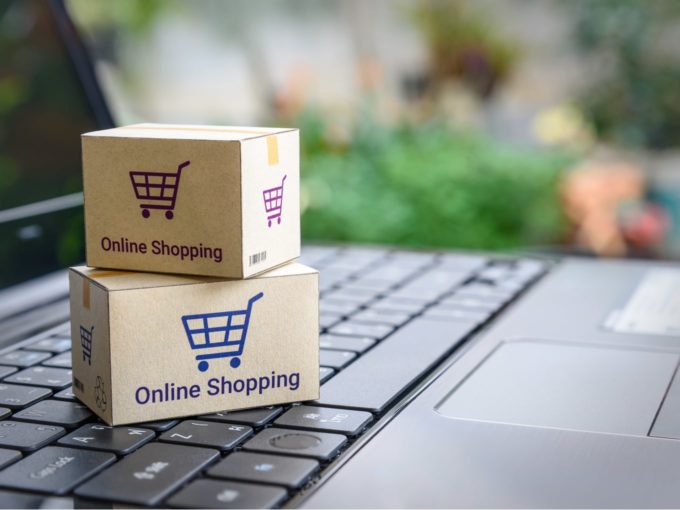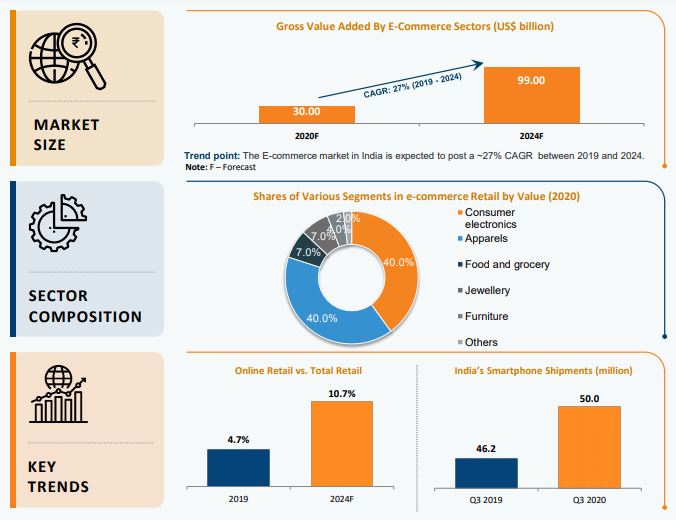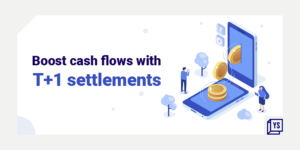Ever since the Covid-19 pandemic has begun, consumer purchase behaviour has changed drastically, which has led sales and marketing departments to reconsider their current practices and adopt new strategies and technologies to tackle this behaviour change
Even though economic activities are slowly returning to normal, there is an upward trend in online sales, and predictably, the revenue from online sales will continue to grow in double digits in the future
Studies show that people are more likely to listen to and follow recommendations of people they follow and admire, rather than getting carried away by advertisements

In 2020, even though reports showed that certain categories of products like fashion would not gain traction for a long time after the pandemic, companies like Amazon, Flipkart, Myntra, Paytm are gearing up for their annual sales in 2021 and data shows that these campaigns will be successful due to the many changes that the pandemic has brought. Fashion itself is expected to see a 20% growth in the year 2021 all due to the shift towards digital.
Ever since the Covid-19 pandemic has begun, consumer purchase behaviour has changed drastically, which has led sales and marketing departments to reconsider their current practices and adopt new strategies and technologies to tackle this behaviour change.

Source: IBEF 2021
According to IBEF, the Indian E-commerce market is expected to grow to US$ 200 billion by 2026 from US$ 38.5 billion in 2017. This is fuelled by the growth in the 4G network, increase in consumer wealth, and smartphone penetration. According to the report, Indian e-commerce grew by 36% in the last quarter of 2020. The categories that saw the highest growth were personal care and beauty while e-pharmacy, online groceries, and social e-commerce are expected to receive the bulk of the sales in 2021.
Even though economic activities are slowly returning to normal, there is an upward trend in online sales, and predictably, the revenue from online sales will continue to grow in double digits in the future. This means companies need to work on their digital presence and strengthen it.
Now, the questions that arise are:
- What digital strategies should brands adopt to make their e-commerce businesses successful?
- What aspects do they focus on to make this digital transition smooth?
- Which tools can they use to make digital campaigns more effective?
First of all, marketers have to consider that pandemic and overall “hard times” shifted consumers’ budgets and mindset to saving instead of spending. Now it’s more important than ever to create demand for your products. So the general suggestion for marketers to stop competing only for existing demand with marketing channels like Google Adwords, Marketplace ads or SEO, but take a closer look at demand creation channels: display ads and especially influencer marketing.
Below are four factors that companies can focus on to boost their sales and marketing efforts.
- Campaigns: Companies must create event-specific campaigns that drive engagement as well as sales. It is also important that they monitor the performance of the campaigns to evaluate whether they have been meeting their objectives and are impacting sales.
These days, several tools are available to maximize the reach of such campaigns.
One of them consists of making use of micro-influencers. Studies show that people are more likely to listen to and follow recommendations of people they follow and admire, rather than getting carried away by advertisements. Influencer marketing campaigns are highly effective, especially when there are time constraints. When executed well, they can reach wider audiences, and generate hundreds of leads for brands.
Nowadays, there are platforms and tools available in the market that make it easy to implement influencer marketing campaigns.
One such tool is the “Performance Influencer Marketing” tool, where brands can find information about influencers and evaluate results brought in by the influencers. They deploy the Cost Per Action (CPA) model, where brands are required to pay influencers based on the results they produce and not simply their reach.
- Omnichannel: Omnichannel comes into play at different stages of a customer’s journey, right from when they want to compare prices online, or when they want to touch and see the products before they make the purchase.

Source: Statista
According to Statista Research Department, the number of online shoppers in India is expected to reach up to 220 million in 2025. This gives e-commerce companies further reason to focus on their online presence and online user experience.
Brands must focus on creating unique and memorable experiences for customers across all points at which the customers come in contact with brands. At each of these points, brands must resonate confidence and loyalty so that they can create lasting relationships with their customers.
- Security: Due to the rapid increase in online fraud, data security is becoming an increasingly important factor when it comes to gaining the loyalty of online customers. E-commerce companies need to ensure that their websites are protected so that consumers know that their sensitive information is not in danger while they are shopping with a brand.
According to a report by EY, online penetration of retail is expected to reach 10.7% by 2024, versus 4.7% in 2019, while online shoppers in India are expected to reach 220 million by 2025. Companies need to focus on adopting technology and innovation so that they can create a safe environment for their customers.
- Information: Companies must ensure that their website is user-friendly and has accurate and complete information about their products and services.
It includes high-definition pictures of the product, details about features, delivery time, price, guarantee period, availability, and information about discounts and promotions if applicable, shipping charges, returns policies, etc. All of these play an important role in making the customer experience seamless and unique.
Brands must analyze their websites to see where and how they can personalize and improve them and how they can consolidate their e-commerce functions. During this, one vital thing that brands must do is identify the one thing that sets them apart from competitors and then capitalize on it.
Join 1,000+ Attendees & A Star-Studded Lineup Of 50+ Expert Speakers At India’s Largest D2C Conference! Claim 50% + 30% OFF Today!



![Read more about the article [Funding alert] SaaS startup Rattle raises $26M Series A funding led by Insight Partners](https://blog.digitalsevaa.com/wp-content/uploads/2022/04/Rattle-1649138437639-300x150.jpeg)






